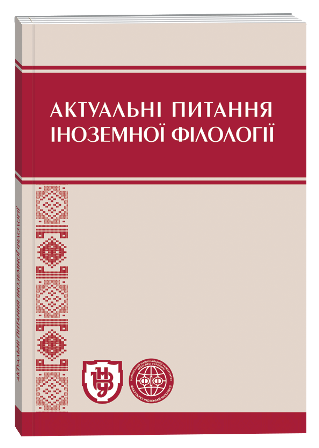MOTOVATIONAL DIFFERENCES IN LEARNING FOREIGN LANGUAGES
Keywords:
motivation, motivational differences, foreign language, method of teaching, successAbstract
The article deals with the analysis of the main motivational factors that influence the ways of learning foreign languages. Taking into consideration modern processes of globalization, tendencies to the internationalization of business activities, scientific research, provision of educational services, cooperation in the spheres of culture and religion, foreign language acquisition plays one of the key roles in the development of the modern world. The main reasons for learning a foreign language are the following: school curriculum, personal growth and development, integration into the world community, cognition of a new culture, and foreign language for specific purposes (professional, academic and scientific). Motivation is one of the main factors of success that is why pupils/students who have a strong desire to learn a foreign language will learn it anyway. Scholars call motivation an inner driving force due to which students achieve their set goals: short-time goals and long-time goals. Long-time goals are connected with such desires as to get education, to be able to communicate with the members of a target foreign language community. Short-term goals can include such components as a desire to pass a final test, to finish a module or topic. Motivation can be divided into two categories: external which is connected with the factors outside a classroom, and internal which depends upon what is happening in the classroom. As a rule, external motivation is subdivided into integral (when students want to integrate into a cultural community of a target language) and instrumental (a target language is used as an instrument for achieving and fulfilling certain goals). A very powerful factor which influences a success of a student in a foreign language acquisition is his previous experience in learning a language. That is why if it was positive then it will enhance the achievement of an effective result. In this context a propaedeutic function of the Esperanto is very relevant. Its learning as the first foreign language does not only multiply the positive results of a foreign language acquisition but creates a positive attitude of students to a foreign language learning in general. A success in learning a foreign language depends on the relationships between a teacher and a student and the climate in the classroom, methods of teaching, correlation between the results and difficulties of the tasks.
References
Dobson J. M. Effective Techniques for English Conversation Groups / J. M. Dobson. – Washington : United States Information Agency, 1992. – 137 p.
Gamble M., Gamble T. K. Communication Works / M. Gamble, T.K. Gamble. – USA : The McGraw-Hill Companies, Inc., 1996. – 538 p.
Gardner R. C. Attitudes and Motivation in Second-language Learning / R. C. Gardner, W. E. Lambert. – Rowley : Newbury House, 1972. – 213 р.
Harmer J. The Practice of English Language Teaching / J. Harmer. – Longman Group UK Limited, 1993. – 296 p.
Richards J. C. Longman Dictionary of Language Teaching and Applied Linguistics / J. C. Richards, J. Platt, H. Platt. – UK : Longman, 1999. – 423 p.
Teacher Development. Making Right Movements // Edited by Thomas Karl. – Washington : United States Information Agency, 1994. – 278 p.








